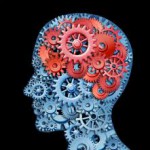Our sponsor is the brain, of course. So, before getting to Part 2, here’s an important message, also excerpted from the final chapter:
The term neuroplasticity has been bandied around a lot in recent years, but it’s been understood for at least a century. In Donald Hebb’s (1940s) memorable words: What fires together wires together — neurons that activate each other become more strongly connected — through adjustments (increased efficiency) in their synapses. Neuroplasticity is the brain’s natural starting point for any learning process. This includes the development of addiction. But is it also the springboard to recovery?
Neuroplasticity is strongly amplified when people are highly motivated. Which is why all learning requires some emotional charge, and entrenched habits like addiction grow from intense desire. Clearly, the desire to recapture a potent experience of pleasure or relief is the motivational on-ramp to addiction. But does desire also cultivate recovery?
In The Woman who Changed her Brain, Barbara Arrowsmith Young describes the many cognitive exercises she devised for herself, in order to overcome her very severe learning disabilities. She practiced these exercises prodigiously. As a result, she went from a high-school student who could not comprehend history, who even had a hard time understanding simple sentences, to a writer and teacher who has set up roughly 70 schools for learning-disabled children across North America. I met this remarkable woman in Australia, at a book fair, and I became convinced that her intuition, creativity, and determination to triumph over her learning disabilities were precisely the means by which addicts recover. I also learned her delightful phrase for the neuroplasticity needed to replace bad habits with good ones: What fires together wires together, and what fires apart wires apart. In other words, new mental patterns can fashion new and divergent synaptic avenues.
 In 1993, Mogilner and colleagues looked at the brains of people plagued with webbed fingers. That means that some of their fingers were connected and could not operate separately – they functioned in total unison. After surgery was performed to allow the fingers to move on their own, these authors looked at changes in the (somatosensory) cortex. What they found was that clusters of neurons that had always fired together now fired partially independently.
In 1993, Mogilner and colleagues looked at the brains of people plagued with webbed fingers. That means that some of their fingers were connected and could not operate separately – they functioned in total unison. After surgery was performed to allow the fingers to move on their own, these authors looked at changes in the (somatosensory) cortex. What they found was that clusters of neurons that had always fired together now fired partially independently.
The presurgical maps displayed shrunken and nonsomatotopic hand representations. Within weeks following surgery, cortical reorganization occurring over distances of 3-9 mm was evident, correlating with the new functional status of their separated digits.
So the brain adjusted its wiring, breaking down the coherent habit it had assumed, based on the details of repeated action patterns, and replacing it with new habits, based on novel action patterns. In fact these changes were observable just weeks after the change in action patterns took place! Might recovery work the same way?
Just in case you think the webbed-finger analogy is far fetched, you should know that it’s not an analogy. That’s exactly how neuroplasticity works, whether dealing with severe learning problems (which no doubt involve the prefrontal cortex) or reversing a physical anomaly that took hold during prenatal development (involving the sensorimotor cortex).
 When people recover from strokes or concussions, the same sort of rewiring takes place in many regions of the cortex. Even language, one of the most basic human functions, can be relearned after it has been demolished by brain damage, through the synaptic rewiring of cortical regions that previously took care of other business. Thus, neuroplastic change can and does occur, in real life, with a speed and vigor we rarely imagine.
When people recover from strokes or concussions, the same sort of rewiring takes place in many regions of the cortex. Even language, one of the most basic human functions, can be relearned after it has been demolished by brain damage, through the synaptic rewiring of cortical regions that previously took care of other business. Thus, neuroplastic change can and does occur, in real life, with a speed and vigor we rarely imagine.
Back to addiction. People learn addiction through neuroplasticity, which is how they learn everything. They maintain their addiction because they lose some of that plasticity. As if their fingers had become attached together, they can no longer separate their desire for wellbeing from their desire for drugs, booze, or whatever they rely on. Then, when they recover, whether in AA, NA, SMART Recovery, or standing naked on the 33rd-floor balcony of the Chicago Sheraton in February, their neuroplasticity returns. Their brains start changing again—perhaps radically. Just as in Mogilner’s study, their brains begin to grow new synaptic patterns to allow for those distinctions, to hold onto them over time, and thereby acquire new vistas of personal freedom and extended wellbeing.
The take-home message here is simple: Recovery involves a major change in thought and behavior, and such changes require ongoing neural development. Without developmental adjustments in synaptic patterns, we would stay exactly the way we are. Which raises the question: If the high-beam of desire is what drives the synaptic shaping of addiction, is it also the necessary ingredient for finding the road out?

Leave a Reply